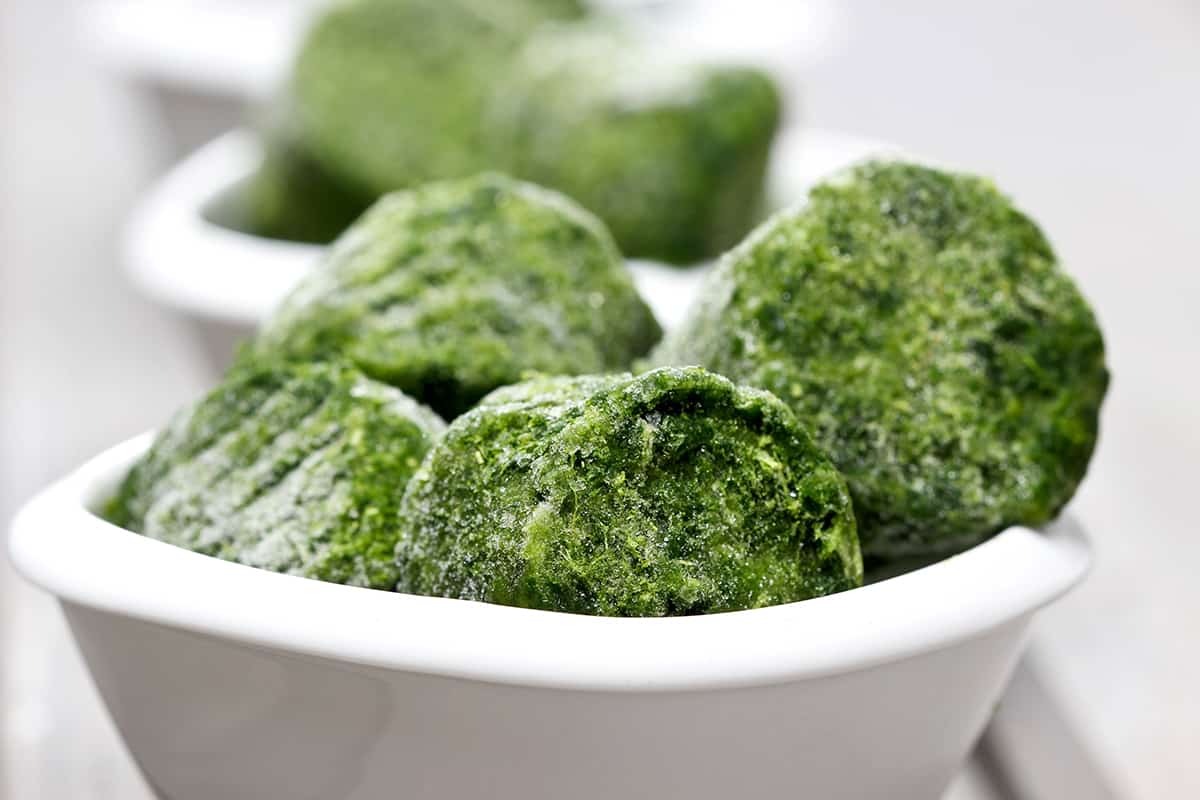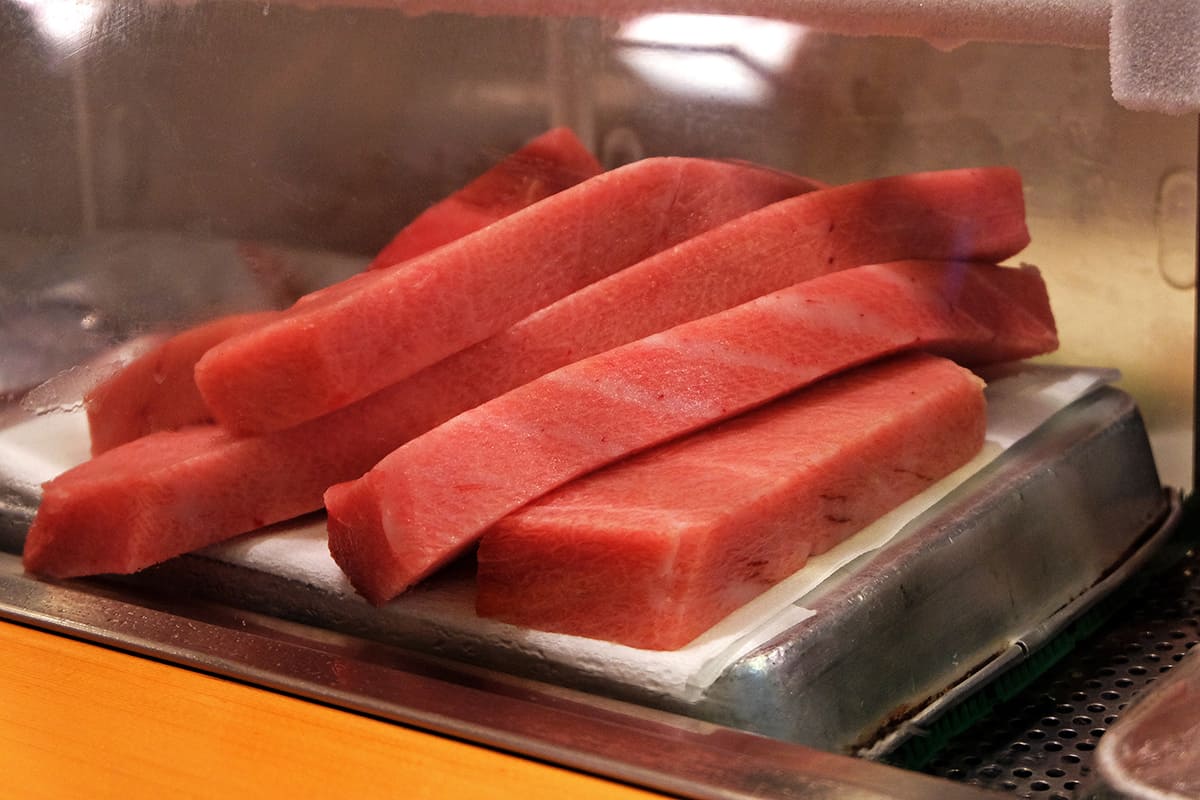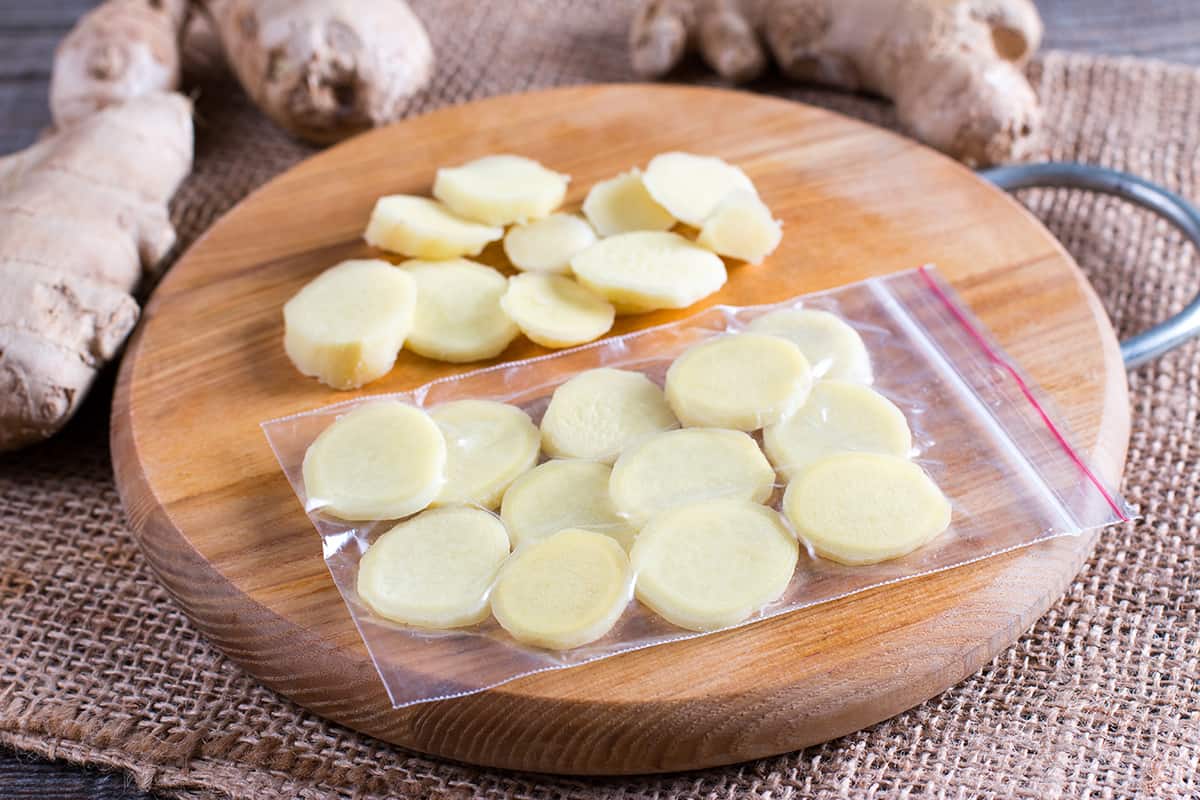One of the most versatile vegetables that serves as a portion of most food is spinach. It’s a multi-purpose vegetable that you can use in your salad or for your cooked meals or grills. Sadly, there’s always a problem with storing spinach. Because it doesn’t last long if you just put it in your refrigerator.
This makes freezing the best way to preserve spinach for a very long time. You might be wondering how to then make use of the spinach if it’s frozen.
Well, I have got you covered. Continue reading to see how to thaw your frozen spinach before using it.
There are various ways of thawing your spinach and getting it ready to eat. Leaving it in the sink overnight or keeping it in the fridge for a day or two has been proven to be effective in defrosting the spinach.
Additionally, microwaving it with the use of the defrost button or running warm water through it, works as well.
Thawed spinaches are great veg in cooked foods like soups, stews, or even in salads or any other kind of food. If you’re in a hurry, you can just put the frozen spinach into the meal you’re preparing and it will defrost in no time without losing its flavor and integrity.
Continue reading as I show you the best practices to adopt in getting your frozen spinach ready for eating.
As I have said earlier, there are various methods to defrost your spinach. Below are some of these methods. They can be used singularly or combined.
Tossing It Inside Your Meal While Cooking
The fastest way to defrost your favorite veggie is to put it directly into the dish you’re preparing. Just get the required amount of spinach needed and add it to the other ingredients in your pot. In a few minutes, your spinach will have melted and combined with the food.
The disadvantage of this method, though, is that it will add additional water to your meal, if that doesn’t sit well with you, do consider the other methods below.
Keep It In The Refrigerator
While the above method is for those in a hurry, putting your veggies in the refrigerator to thaw is for those with time on their hands. Thawing your spinach in the refrigerator can take up to two days and if you apply the draining process explained in this article, it will leave your spinach looking fresh and without mush.
This method is also advisable, especially if you want the veggie to look fresh because it exerts the least amount of pressure on the leaves, allowing them to adjust to the change in temperature.
Keeping the spinach in the refrigerator will make it thaw at a slow rate and take a long time. This means that the spinach might be soaked with the defrosted ice and this will make it soggy.
To prevent this, ensure that your spinach is placed in a container that has a filter. Better still, you can put it in a basket or container and place it on top of a smaller container so that the melted ice can drip into the container instead of soaking the vegetable.
Leave It In The Sink To Defrost

This is another slow but effective thawing method. The trick is to let it thaw under room temperature. To avoid unnecessary stress of cleaning up after it has defrosted, put the veggie in a colander and keep it in the sink.
This way the melting ice is automatically drained. The thawing process should be done within 8 hours if thawed under room temperature, but ultimately how fast it will thaw depends on how cool or hot the room is.
When it has fully melted, give it a gentle squeeze to drain out excess water. Your freshly thawed spinach is now ready for use.
Pass Your Frozen Spinach Under Warm Water
If you don’t have eight years to spare, don’t despair; you can still defrost your spinach in time; run it under warm water to hasten the process of melting.
It is important to place your spinach block in a strainer so as to make things easier for you as the water will drain easily.
Furthermore, you need to regulate the water pressure so that the leaves will not shrink and can remain fresh. But most importantly, do not run it under hot water because you’ll basically be cooking your spinach.
We don’t want to cook our spinach just yet, do we? Plus, overcooked spinach will just shatter into bits. Another reason to avoid running your spinach under hot water is that it will just dry out the leaves, taking away all the leafy juices.
Microwave The Frozen Spinach Block
You can defrost your spinach in under 2 minutes with the microwave oven. Just put it in defrost mode and you’re good to go.
Keep in mind, though, that your spinach can burn if you use high heat. In the event that your microwave oven doesn’t have the defrost mode, the lowest heat setting should be the best option for you to use.
Your main aim is to drain the frozen water your spinach is embedded in, not cook it together with the spinach. Do not forget that you still have to cook the leaves with the rest of the ingredients.
Thawing Frozen Spinach On The Counter
Your frozen spinach can defrost when you leave it on the counter. But the best practice is to place it inside a colander and leave it in the sink so that the melted ice drains away. This way you save the stress of cleaning up after it has thawed.
Best Method to Defrost Frozen Spinach Overnight
If you’re considering defrosting your spinach overnight, allowing it to thaw in the refrigerator is the best method. Just leave it there before you call in the night and check to see the level of thawing in the morning.
You can quicken the process if you want to cook by placing it under warm water and gently pushing out the surplus water before continuing with the cooking process.
Ensure that you cook your spinach well. The recommended temperature is above 165° Fahrenheit. Cooking your meal well and above this temperature will kill off the harmful bacteria.
When your spinach is not properly blanched before you freeze it, it can make cooking your vegetable well and above the stated temperature doubly important. This is because bacteria like listeria and E. Coli might be in uncooked vegetables and stay latent while frozen. That is, wait for a favorable condition before reactivation.
Ways To Cook Frozen Spinach

There are different combinations and variations of meals and ways to cook spinach. There are more than a score of recipes to choose from. Your frozen spinach can also be used as a pizza topping or for stuffed foods. It has also been used in sauces, dips, casseroles, pasta, and soups
The best method to drain icy spinach.
As noted earlier, defrosting spinach should be put in a strainer and left in the sink, or you can put a smaller container under the colander to collect the water draining out. When the veggie has properly melted, gently squeeze it to drain excess water.
Spreading the drained spinach on paper towels has also been proven to get rid of excess water.
Take caution not to put the spinach in a salad spinner in a bid to drain out surplus water. If you do, you’ll end up cleaning out the spinach plastered onto the bowl of the salad spinner.
Length of Use of Thawed Spinach
Defrosted spinach is still in good health for two days in the refrigerator. By the third day, the leaves will become icky or soggy and begging to be trashed.
You’re inviting bacteria infection, especially for vegetables that were not blanched before freezing, if you leave for longer than three days. Because of this, it is necessary to defrost only the amount you need for the particular meal.
It’s advisable to freeze your spinach in different bowls with each bowl containing just a handful of spinach.
The amount of spinach in each bowl should be based on the amount you use for a meal. When you have portioned the spinach according to the amount you use for a meal, you can go ahead and freeze them. Spinach, once frozen, can stay in good condition for up to 14 months.
Methods of Thawing Spinach For Salad
For the salad, the better method is to put it in the microwave oven using the defrost mode for two minutes.
If your microwave doesn’t have the defrost button, as I stated earlier, use the lowest heat setting.
Ensure that you drain out surplus water by gently squeezing it, spreading it on a paper towel, or even placing it in a clean cloth and squeezing out additional water.






